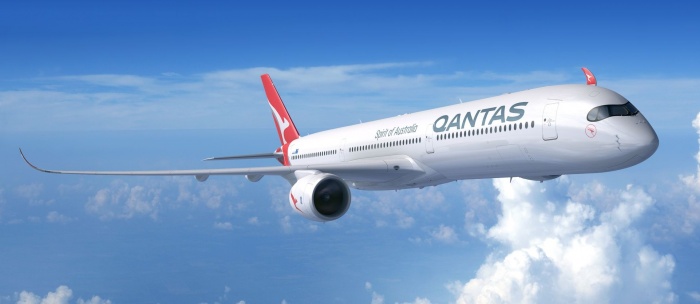
Qantas selects Airbus A350-1000 for Project Sunrise flights
After detailed evaluation of the Boeing 777X and Airbus A350, Qantas has selected the A350-1000 as the preferred aircraft for project Sunrise.
With a decision on whether or not to proceed expect in March next year, the project examines Qantas’ ability to fly super-long-haul routes.
This Airbus 350-1000 uses the Rolls Royce Trent XWB engine, which have a strong reliability record after being in service with airlines for more than two years.
Airbus will add an additional fuel tank and slightly increase the maximum take-off weight to deliver the performance required for Sunrise routes.
No orders have been placed but Qantas will work closely with Airbus to prepare contract terms for up to 12 aircraft ahead of a final decision by the Qantas Board.
Airbus has agreed to extend the deadline to confirm delivery slots from February 2020 to March 2020.
This provides additional time to negotiate an industrial agreement without impacting the planned start date of flights in the first half of calendar 2023.
Sunrise
The last of three Project Sunrise research flights (New York to Sydney) will be conducted on December 17th.
ADVERTISEMENT
Once complete, Qantas will have almost 60 hours of ‘Sunrise flying’ experience and thousands of data points on crew and passenger wellbeing.
The data for crew will be used as part of final discussions with the Civil Aviation Safety Authority to approve an extension to current operating limits required for these ultra-long-haul services.
Based on detailed information already provided by Qantas on its fatigue risk management system, CASA has provisionally advised that it sees no regulatory obstacles to the Sunrise flights.
Qantas Group chief executive, Alan Joyce, said the national carrier’s support for Project Sunrise was stronger than ever, particularly after the success of recent ‘dry run’ research flights.
“Between the research flights and what we’ve learned from two years of flying Perth to London, we have a lot of confidence in the market for direct services like New York and London to the east coast of Australia.
“The A350 is a fantastic aircraft and the deal on the table with Airbus gives us the best possible combination of commercial terms, fuel efficiency, operating cost and customer experience.
“The aircraft and engine combination is next generation technology but it’s thoroughly proven after more than two years in service.
“This is the right choice for the Sunrise missions and it also has the right economics to do other long-haul routes if we want it to.”
He added: “From the outset, we’ve been clear that Project Sunrise depends on a business case that works. We’ll only commit to this investment if we know it will generate the right return for our shareholders given the inherent commercial risks.
“We’ve done a lot of work on the economics and we know the last gap we have to close is some efficiency gains associated with our pilots.
“We’re offering promotions and an increase in pay but we’re asking for some flexibility in return, which will help lower our operating costs.
“Airbus has given us an extra month to lock in an aircraft order without impacting our planned start date, which means we can spend more time on hopefully reaching a deal with our pilots.”
Design of the customer experience for flights up to 21 hours continues, including new cabins across first class, business, premium economy and economy.
Research flights have underscored the importance of dedicated space for stretching and movement for economy passengers in particular, as well as the potential benefits from re-designing the service on board to actively shift people to their destination time zone.

